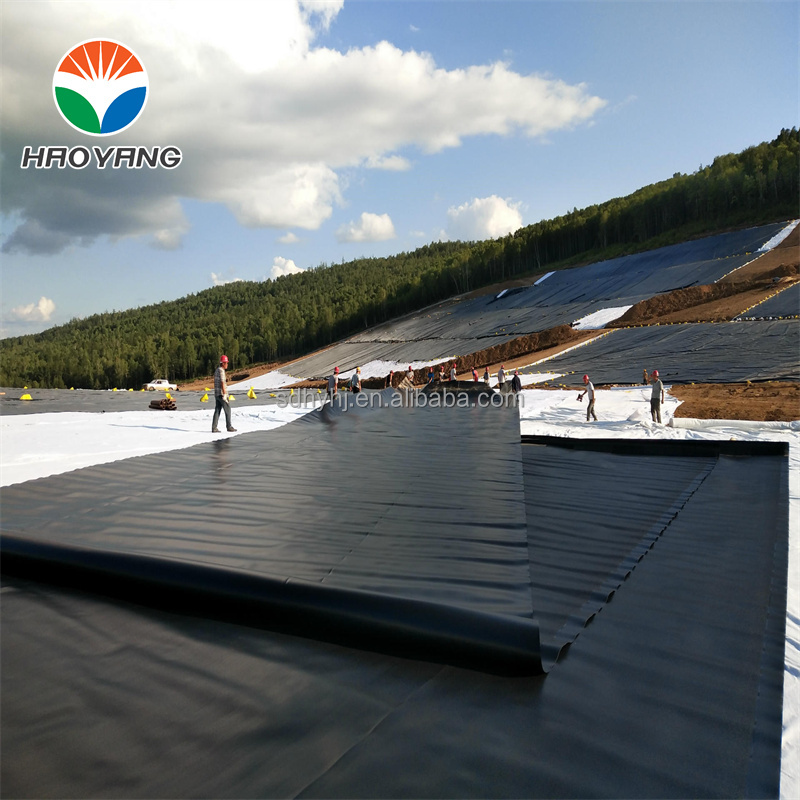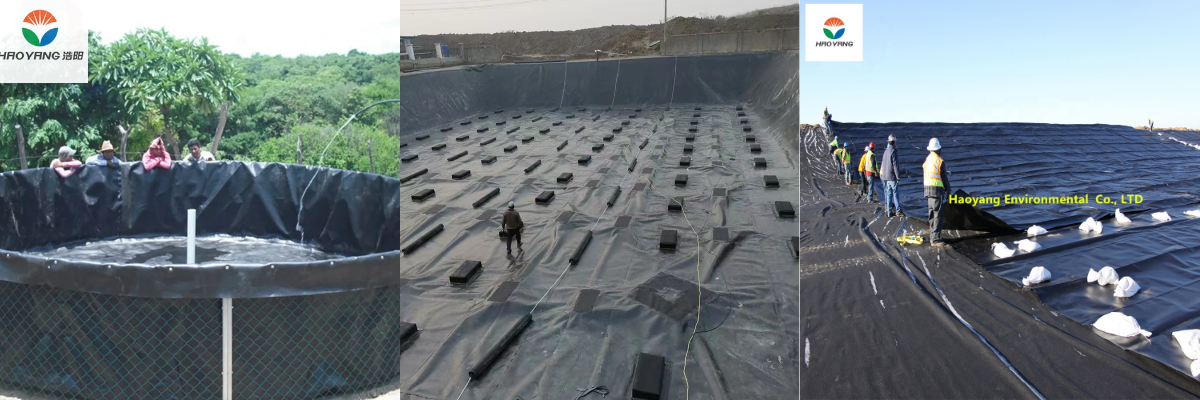1.5mm HDPE Geomembrane Dam Liner
1.Lightweight and Flexible: Simplifies transportation and installation on irregular terrain.
2.Cost-Effective: Lower material and labor costs with comparable longevity to thicker liners.
3.Rapid Deployment: Accelerates project timelines while ensuring minimal maintenance.
1.5mm HDPE Geomembrane Dam Liner: An Optimal Solution for Modern Hydraulic Engineering
Introduction
In the realm of hydraulic engineering, dam liners play a pivotal role in ensuring water retention, seepage control, and structural integrity. Among the diverse range of geomembrane materials, 1.5mm High-Density Polyethylene (HDPE) geomembrane has gained prominence as a versatile and efficient solution for dam applications. This article delves into the technical specifications, applications, and advantages of 1.5mm HDPE geomembrane dam liners, supported by empirical data and real-world case studies.
Technical Specifications of 1.5mm HDPE Geomembrane
Physical Properties
1.5mm HDPE geomembrane is engineered to balance flexibility and mechanical strength. Its reduced thickness compared to thicker alternatives (e.g., 2mm) enhances adaptability to irregular substrates while maintaining robust performance under hydraulic pressure. Key physical properties are outlined in Table 1.
| Property | Specification | Test Standard |
Thickness | 1.5 ± 0.1 mm | ASTM D1777 |
Tensile Strength (MD/TD) | 27 MPa / 25 MPa | ASTM D638 |
Elongation at Break (MD/TD) | 600% / 550% | ASTM D638 |
Puncture Resistance | 350 N | ASTM D4833 |
Carbon Black Content | 2.5 ± 0.5% | ASTM D1603 |
Chemical and Environmental Resistance
HDPE’s inherent chemical inertness makes it resistant to acids, bases, salts, and organic compounds. The 1.5mm variant retains this property, ensuring long-term stability in aggressive environments. UV stabilizers and carbon black additives further enhance durability under prolonged sun exposure.
Applications in Dam Projects
Primary Seepage Barrier
1.5mm HDPE geomembrane is widely deployed as a primary seepage barrier in earth-fill and rock-fill dams. Its impermeable nature minimizes water loss through the dam body and foundation, preserving reservoir capacity. For instance, in a medium-sized irrigation dam (Project C), the geomembrane reduced seepage rates by 75% compared to traditional clay liners.
Environmental Protection
By preventing contaminated water from leaching into surrounding soil and groundwater, 1.5mm HDPE geomembrane safeguards ecosystems. This is critical in dams storing agricultural runoff or industrial wastewater. A flood control dam (Project D) utilized the material to isolate polluted sediment, achieving a 90% reduction in heavy metal migration.
Retrofitting Aging Infrastructure
Thinner geomembranes like 1.5mm HDPE are ideal for retrofitting aged dams where weight and flexibility matter. Their ease of installation over existing structures extends service life without major reconstruction. A 40-year-old reservoir dam in a temperate zone was upgraded using 1.5mm HDPE, cutting seepage by 60% at half the cost of concrete repairs.
Advantages of 1.5mm HDPE Geomembrane Dam Liner
Lightweight and Flexible
The reduced thickness of 1.5mm HDPE geomembrane lowers transportation costs and simplifies handling. Its flexibility allows seamless integration with uneven terrain, reducing the need for extensive site preparation. This adaptability is particularly beneficial in mountainous or rocky regions.
Cost-Effective Performance
While thinner than alternatives, 1.5mm HDPE maintains sufficient strength for most dam applications. Its lower material consumption and installation efficiency translate to 20–30% cost savings compared to 2mm HDPE or concrete liners. Life-cycle analyses confirm its cost-effectiveness over decades of use.
Rapid Installation and Maintenance
The lightweight nature of 1.5mm HDPE accelerates deployment. Welding and anchoring processes are quicker, shortening construction timelines. Minimal maintenance is required due to its resistance to cracking, root penetration, and biological degradation.
Comparative Performance Analysis
Table 2 compares 1.5mm HDPE geomembrane with alternative dam liner materials.
| Material | Thickness | Tensile Strength | Installation Ease | Long-Term Durability | Cost |
1.5mm HDPE | 1.5mm | 27 MPa | High | Excellent (50+ years) | Low |
2mm HDPE | 2.0mm | 35 MPa | Moderate | Excellent (50+ years) | Medium |
Compacted Clay | 500mm | 0.3 MPa | Low | Variable (10–20 years) | High |
Concrete | 300mm | 30 MPa | Low | Good (30–40 years) | Very High |
Case Studies
Project C: Medium-Scale Irrigation Dam
A dam in an arid region faced severe seepage losses, threatening water supply for 10,000 hectares of farmland. Installation of 1.5mm HDPE geomembrane across the reservoir and downstream slope reduced annual water loss by 120,000 m³. The project was completed in 8 weeks, with a 25% lower budget than clay alternatives.
Project D: Urban Flood Control Dam
In a densely populated area, a dam required rapid rehabilitation to meet flood safety standards. The 1.5mm HDPE geomembrane was chosen for its lightweight properties, enabling installation on a steep slope without heavy machinery. Post-installation monitoring showed a 65% reduction in seepage, ensuring compliance with environmental regulations.
Conclusion
1.5mm HDPE geomembrane dam liners represent a harmonious blend of performance, economy, and practicality. Their reduced thickness does not compromise essential traits like chemical resistance and UV stability, making them ideal for modern hydraulic challenges. By offering flexibility, cost efficiency, and ease of use, this material addresses the evolving needs of sustainable water management.












